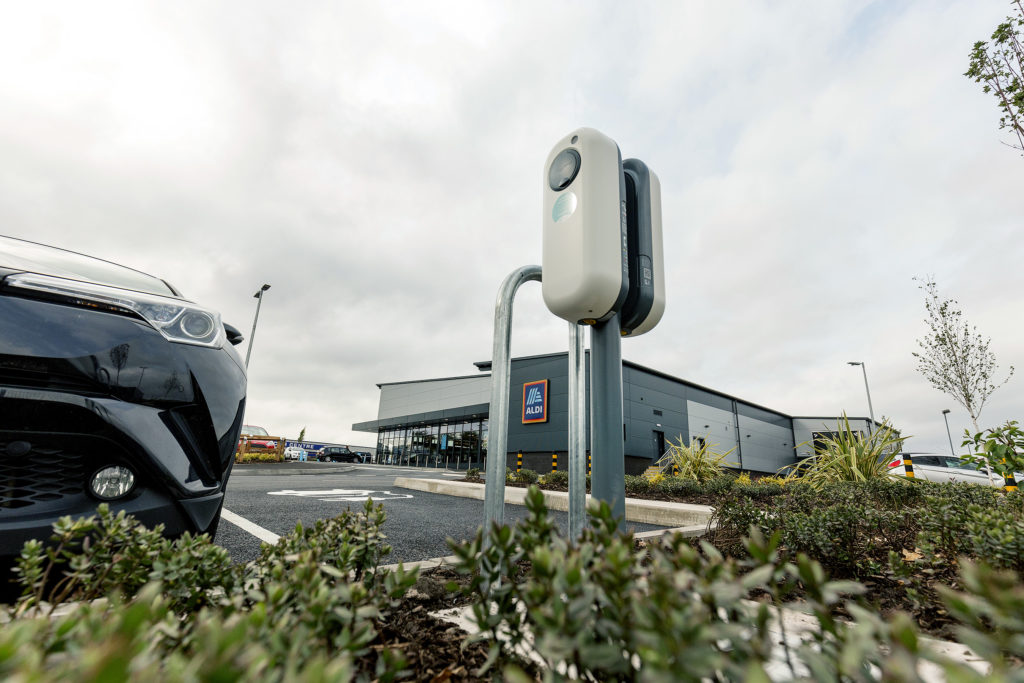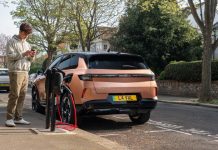 Smart charging and a considered rollout strategy is critical to maximise available grid capacity and minimise cost for businesses, says Alan McCleave, general manager at NewMotion UK.
Smart charging and a considered rollout strategy is critical to maximise available grid capacity and minimise cost for businesses, says Alan McCleave, general manager at NewMotion UK.
One of the few upsides from the Covid-19 lockdowns was cleaner air and significant CO2 reductions. Electric vehicles, says Alan McCleave, can make those environmental gains “the new normal”.
While economic disruption has impacted EV sales, they are still expected to more than double in 2020, according to SMMT, and McCleave thinks the UK is on the cusp of “hockey stick” growth.
“It has taken ten years to get to one per cent of vehicles being plug-in, but in the next four to five years, that will very likely reach ten per cent – a massive scale up,” says McCleave.
“Choice, availability and affordability is starting to come from carmakers – which indicates that mass market uptake is on its way,” he says, “After all, you can’t have growth without product.”
The flip side is charging infrastructure, where NewMotion is building relationships with car manufacturers, dealers and leasing companies to install chargers at their premises – and also at their customers’ premises and homes. A smart approach is key, says McCleave.
Think ahead
Given the growth curve, car dealerships must quickly get to grips with charging infrastructure. If they are considering AC chargers, McCleave advises them to go for higher capacity 22kW versions to future-proof their requirements.
“It’s additional investment, but if you are going to dig up a car park, it’s best to only do it once,” says McCleave. “A 22kW charger is only about 30 per cent more than a 7kW charger on install costs. It’s an uncertain world right now, but our advice is if you can afford it and have the power capacity on site, you should take that approach.”
Capacity crunch
For dealers – and any business with a large car park – electrical capacity will likely become an issue, if it is not already.
“Nobody ever built a dealership thinking they would become mini power stations. If you are building a new site, you can specify 20 chargers. But if you are retrofitting an old site, that is challenging – and if the power network requires upgrades, that can command a six figure sum without even putting in any chargers,” says McCleave, “So these are not insignificant decisions, especially where leases may only have a few years to run.”
Those tasked with implementing workplace and destination charging at scale must navigate similar challenges.
Smart approach
Smart charging is critical to maximise available grid capacity and minimise cost, says McCleave. Using connected technology to add smart services to the charge points helps balance on site energy use to keep within capacity allowances and allow the site’s Distribution Network Operator to approve the required infrastructure.
Meanwhile, company car drivers that can install chargers at home can take advantage of time of use tariffs. That approach can lead to running costs as low as 1-2p/mile, he suggests, saving significant sums while helping to enable a cleaner power system and helping to balance local grids.
“Charging at home makes life easier and unlocks access to those kind of smart tariffs. But a lot of people don’t have off street parking, which is why workplace charging is such an important part of the puzzle,” adds McCleave.
Businesses appear to recognise the role they must play in enabling the transition. Covid-19 disruption notwithstanding, McCleave says demand for workplace charging has picked up markedly since last summer, with Benefit in Kind rates changes spurring “a lot more urgency”.
Interoperability
Achieving interoperability between charging networks as soon as possible would help enable a stronger, greener recovery as the economy attempts to shake off Covid-19.
Enabling drivers to charge anywhere with minimal fuss will speed uptake, McCleave believes, and will be especially important for destination and on-the-go charging, where operators are hoping to drive footfall and increase dwell time.
“The ability to charge anywhere with one means of payment or access is not possible today. But if we can break that interoperability barrier, it becomes interesting – not least because fleet operators are then less concerned about the range of the car nor have to worry about where the drivers can charge, or how they will pay,” says McCleave.
“Drivers will still need to plan their journeys – but that would make it a lot easier.”
Aldi thinks ahead

Picture: Chris Bull / UNP
NewMotion is installing 22kW charging stations across Aldi’s new UK stores as well as at the retailer’s Atherstone headquarters. McCleave says by opting for a higher power capacity than the standard 7kW chargers, the supermarket is future-proofing its operations as EVs with bigger batteries and faster charging capabilities start to hit the market.
While NewMotion provides account management and support for Aldi, McCleave says the supermarket can also remotely manage all aspects of its charging infrastructure via the NewMotion Business Hub.
Free download: The 2020 EV report
 This article is one of a number of in-depth interviews conducted for The Energyst’s new 2020 EV report. It contains expert insight across a range of sectors, plus a survey of more than 300 firms around EV charging infrastructure plans.
This article is one of a number of in-depth interviews conducted for The Energyst’s new 2020 EV report. It contains expert insight across a range of sectors, plus a survey of more than 300 firms around EV charging infrastructure plans.
Sponsored by Arup, EDF, Good Energy, NewMotion and Total Gas & Power, the report also includes views from: Arval, Cenex, DPD, Dreev, Engenie, ev.energy, Hitachi Capital Vehicle Solutions, Mitie, National Grid, Nottingham City Council, the John Lewis Partnership, TLT, UPS, UK Power Networks and Western Power Distribution. Download the report here.



